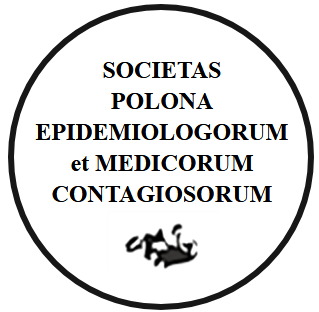RESEARCH PAPER
Reidentification and determination of drug susceptibility of Corynebacterium diphtheriae and Corynebacterium ulcerans strains isolated from clinical samples in 2023 in Poland
1
Zakład Bakteriologii i Zwalczania Skażeń Biologicznych, NIZP PZH PIB, Polska
Submission date: 2024-03-31
Final revision date: 2024-05-06
Acceptance date: 2024-05-24
Online publication date: 2024-06-21
Publication date: 2024-09-18
Corresponding author
Przegl Epidemiol 2024;78(2):207-218
KEYWORDS
TOPICS
ABSTRACT
Background: Despite the fact that the last cases of fully-symptomatic diphtheria were recorded in Poland in 1996 and 2000, infections caused by non-toxin-producing strains of Corynebacterium still occur. According to the epidemiological reports from ECDC in the second half of 2022, there was an increase in the number of diphtheria cases in European Union countries. As a result, the current issue becomes the appropriate preparation of microbiological laboratories for the diagnosis of Corynebacterium microorganisms. Objective: Reidentification of diphtheria bacilli isolated from clinical samples and to assess the drug susceptibility of C. diphtheriae strains isolated in Poland. Material and methods: The subject of the research were 18 strains isolated from clinical samples in Poland in 2023. Microbiological and genetic methods were used for the reidentification of the strains. Drug susceptibility was assessed using the disk diffusion method, following the new EUCAST recommendations effective from 2023. Results: It was confirmed that all examined strains belonged to the genus Corynebacterium. It was de-monstrated that C. diphtheriae strains proved to be susceptible to increased exposure to benzylpenicillin and cefotaxime. Results obtained using ciprofloxacin allowed categorizing the strains into the intermediate susceptibility category WZE, except for one strain which was resistant to this antibiotic. All tested bacterial strains were susceptible to erythromycin. The C. ulcerans strain exhibited a similar antibiotic resistance profile to penicillin, cefotaxime, and ciprofloxa-cin, with additional detection of resistance to clindamycin. The toxigenicity of the tested strains was excluded. Conclusions: Based on epidemiological data regarding the emergence of new cases of infections caused by Corynebacterium strains, it is advisable to prepare theoretically and practically laboratories for diagnostics to detect potentially toxigenic diphtheria bacilli. Effective methods for the microbiological diagnosis of diphtheria bacilli are available. It is recommended to monitor the susceptibility to antimicrobial agents in all C. diphtheriae isolates
Share
RELATED ARTICLE
We process personal data collected when visiting the website. The function of obtaining information about users and their behavior is carried out by voluntarily entered information in forms and saving cookies in end devices. Data, including cookies, are used to provide services, improve the user experience and to analyze the traffic in accordance with the Privacy policy. Data are also collected and processed by Google Analytics tool (more).
You can change cookies settings in your browser. Restricted use of cookies in the browser configuration may affect some functionalities of the website.
You can change cookies settings in your browser. Restricted use of cookies in the browser configuration may affect some functionalities of the website.





